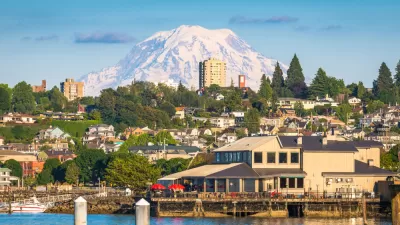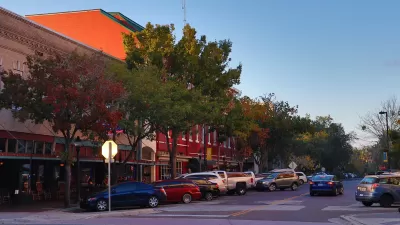Berkeley, California, pioneered exclusionary zoning in the early 1900s; with its new upzoning proposal, the city hopes to reverse that negative legacy and boost its housing supply by eliminating single-family zoning.

In 1916, Berkeley, California, became the first city to pass a single-family zoning law. But now, nearly a century later, the city is poised to reverse that historic — and consequential — decision, “joining other cities around the country overturning the regulations in a growing push to combat shortages and spur multifamily development,” according to a CoStar article by David Holtzman. The city council voted back in 2021 to begin the process of updating the city code to eliminate most of the city’s single-family zoning district and ”was on the cusp of approving plans last month … until a vote on the measure was delayed due to a procedural matter. But local officials expect the council to pass [the plan] in October,” the article reads. Under the new ordinance, 10 houses will be allowed per acre in the former single-family zoning district, while density in other zoning districts is expected to change to allow 20 houses per acre.
Single-family zoning refers to zoning policy that restricts development in an area to single family homes. Originally touted as a way to preserve home values and maintain public health and safety, the original measure was proposed by the developer of the Elmwood neighborhood, who wanted to preserve home values in his development by preventing Black families from moving into adjacent areas. Since then, it has a history of being used as a segregationist tool to control the demographics of an area, which — combined with minimum lot sizes — has prevented more affordable homes and multi-unit buildings on small lots, contributing to our current housing affordability crisis.
For more on the history and impacts of single-family zoning, check out our Planopedia article: What Is Single-Family Zoning?
“I’m not proud that Berkeley was the first city in the U.S. to pass single-family zoning,” Berkeley Mayor Jesse Arreguin said at the city council’s meeting last month, the CoStar article reports. “We see the outcomes to this day in racial disparities perpetuated by exclusionary zoning.”
“Berkeley, like other U.S. cities, is dealing with a local housing crunch, and it tweaked local zoning codes last year to allow for the construction of taller multifamily developments near the University of California, Berkeley, campus, potentially adding thousands of units,” Holtzman writes. The elimination of single-family zoning will also help Berkeley meet a state mandate to build 9,000 new homes by 2031.
The article acknowledges that “California technically ended single-family zoning statewide when Gov. Gavin Newsom passed legislation in 2022 that enabled single-family properties to be subdivided to allow up to four new houses on lots where only one was previously permitted. However, the law has resulted in limited new development thus far and has faced legal challenges from local governments.” The proposed plan in Berkeley will allow for even more density than state law requires. Once it is official, Berkeley will join the ranks of governments across the country that have abolished single-family zoning, including cities like Minneapolis, Sacramento, Austin, Charlotte, Portland, and Gainesville; counties like Arlington County, Virginia; and states like California and Vermont.
FULL STORY: First US City To Adopt Single-Family Zoning Set To Overturn It

Planetizen Federal Action Tracker
A weekly monitor of how Trump’s orders and actions are impacting planners and planning in America.

Chicago’s Ghost Rails
Just beneath the surface of the modern city lie the remnants of its expansive early 20th-century streetcar system.

San Antonio and Austin are Fusing Into one Massive Megaregion
The region spanning the two central Texas cities is growing fast, posing challenges for local infrastructure and water supplies.

Since Zion's Shuttles Went Electric “The Smog is Gone”
Visitors to Zion National Park can enjoy the canyon via the nation’s first fully electric park shuttle system.

Trump Distributing DOT Safety Funds at 1/10 Rate of Biden
Funds for Safe Streets and other transportation safety and equity programs are being held up by administrative reviews and conflicts with the Trump administration’s priorities.

German Cities Subsidize Taxis for Women Amid Wave of Violence
Free or low-cost taxi rides can help women navigate cities more safely, but critics say the programs don't address the root causes of violence against women.
Urban Design for Planners 1: Software Tools
This six-course series explores essential urban design concepts using open source software and equips planners with the tools they need to participate fully in the urban design process.
Planning for Universal Design
Learn the tools for implementing Universal Design in planning regulations.
planning NEXT
Appalachian Highlands Housing Partners
Mpact (founded as Rail~Volution)
City of Camden Redevelopment Agency
City of Astoria
City of Portland
City of Laramie





























